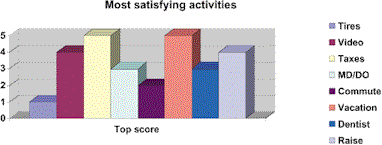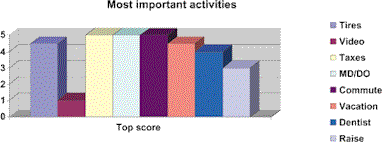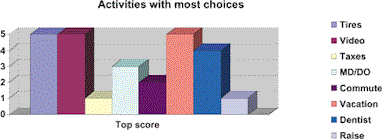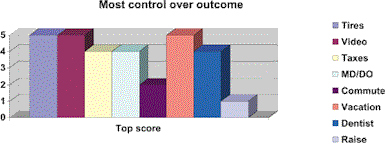Editor’s note: Diana F. Bartlett is president of Sorelli B, a new product development company in Glen Ellyn, Ill.
How does a marketer market a product in negative demand state? That’s the challenge facing the health care strategist today.
Health care is a classic example of negative demand, in which “a major part of the market dislikes the product and may even pay a price to avoid it - vaccinations, dental work, vasectomies, and gallbladder operations, for instance… The marketing task is to analyze why the market dislikes the product and whether a marketing program consisting of product redesign, lower prices, and more positive promotion can change beliefs and attitudes.” (Marketing Management, The Millennium Edition, Philip Kotler, Prentice Hall, 2000, p. 6.)
Historically, governmental subsidies from Medicare and Medicaid have cushioned the health care market from this unpleasant reality. However, the steady drop in reimbursement from these two sources, plus the willingness of Baby Boomers to look for “positive demand” offerings, deflates this cushion.
Unless health care organizations (HCOs) can reshape their image, the next 50 years of peak Baby Boom demand potential will be merely a long half-century of squeezing out dribs and drabs of revenue here and there.
To shift their industry from negative to positive demand response, health care marketers must understand the perceptual “place” health care occupies in the Baby Boomer mind. Because this place is shared with numerous other activities - commuting to work, shopping for groceries, investing in stocks - the “10,000-foot view” of how Boomers choose to spend their time must be analyzed.
Sorelli B is mapping this perceptual location with our national Boomer Consumer Quarterly Health Care Attitudes and Tracking Panel. In this panel, which began in February 1999, adults aged 36-54 utilize a scale of one to five to rank each of the following activities on dimensions of ease, convenience, satisfaction, control, choice, and importance:
- purchasing tires for my car;
- renting a video;
- completing my income taxes;
- going to an M.D./D.O. (doctor of osteopathic);
- commuting to work;
- taking a vacation;
- going to a dentist;
- asking my boss for a raise.
Then, responses are compared to create a perceptual map of health care coordinates vs. the coordinates of other uses of time.
Results appear to confirm that health care carries no inherent appeal, and that the 50-something will purchase care to avoid sickness, but for no other reason.
Selected results
Boomers say that health care is less satisfying than completing income taxes, but more satisfying than purchasing automobile tires.
It’s more important than renting a video, but no more so than commuting to work.
 |
 |
Adults in the study claim that they have greater selection when performing such mundane tasks as shopping for tires and going to the dentist than they do in visiting an M.D. or D.O.
Boomers tell us they have about as much control over the outcome of a physician visit as they do over their income taxes or a trip to the dentist. Despite feeling relatively in control, almost 40 percent of the Boomer Panel report that they would rather treat themselves than see a physician.
 |
The curious thing is that even though Boomers appear interested in care to fix sickness, they are not convinced the care will work! The panel members are almost evenly split about their expectations for a cure: half is rather pessimistic, noting that they do not expect a physician to cure them; the other half is optimistic, anticipating that they will be healed.
 |
It’s the product
Not a lot of selection, not a lot of satisfaction, not outstandingly important…not too hot, not too cold. In total, a good description of a commodity, which is basically what Baby Boomers view health care to be.
Health care marketers who have invested in branding campaigns over the years apparently haven’t made a dent in the vast Boomer consciousness because no amount of fabulous brand work will make up for a product that is, well, boring.
It’s the product that’s the problem. Boomers equate traditional health care with frustrating waits, paternalism, bad news, and poor doctor-patient communication - all to “fix” what ails* them but for nothing more. (*This is not meant to denigrate remedying disease. But which is more valuable to a consumer: repairing a flat tire or having a tire that never goes flat? Repairing a flat tire or owning one that runs more smoothly than another? Repairing a flat tire or having a tire that makes driving easier than it was before? These are the bigger picture realities health care should address.) Practitioners and institutions need to revamp their offerings drastically to engage and entice Boomer brains.
Recommendations
How should marketers approach the transformation from negative to positive demand? Here are several suggestions -- some unconventional, some less so.
1. Strategy leaders should refrain from regarding health care as a matter of life and death. “That’s absurd,” you object, noting that health care is a matter of life and death.
Not really. Perhaps mortality hangs in the balance for segments of the Medicare population and for a small percent of individuals suffering from fatal illness or injury. But the vast majority of Boomers lead normal lives, do not face life-or-death decisions, and thus have no reason to view health care as compelling.
That creates a huge expectation gap between providers and consumers. Instead of gearing up for the sickest of the sick, health care organizations should invent products and services to enhance the lives of people with normal health. In this way, health care will be selling a positive instead of hustling the absence of a negative.
This is not a new idea! Pharmaceutical companies have begun this with “lifestyle” drugs such as Rogaine and Viagra. So, perhaps health care organizations should offer “scientific” how-to information about personal grooming and sexual behaviors.
2. Since most of their healthy Boomer clientele have no need for their services, health care marketers may want to lure them to traditional products and services with the “bait” of activities that are inherently interesting.
For example, we are part of the development team creating a golf neurology clinic in Chicago. This unique clinic will use golf as a hook to get people interested in learning about their neurological diseases and disabilities, and as a carrot to keep them on track with a care plan. The same can be done with other sports and hobbies such as fishing, gardening, and traveling.
In similar fashion, health care organizations (HCOs) can reposition health care as a support for the Boomer value system. For example, Boomers are the “me” generation, with high autonomy needs. How can health care organizations take advantage of these characteristics? Certainly, the service aspects of health care can be modified to put the Boomer squarely in the center: customized health profile plans are one way to do this.
But even the content of care can be adjusted to benefit this ego-driven generation. A practitioner might propose two or three approaches to rehabilitation and allow the Boomer patient to select the one that best satisfies his/her comprehensive needs.
Boomers also value the good life. So the gastroenterology department might specialize in gourmet nutrition therapy based on the work of great chefs, fine vineyards, and progressive dietetic science. An optional out-of-pocket offering might be home-cooked healthy gourmet meals, customized grocery shopping, or a month of nutritionist planning services.
3. Leaders in health care strategy must remember that our health care product is an information product. Whether contemplating a diagnosis, a plan of care, a lifestyle modification, even a drug or medical device, the Boomer resonates to the content, the meaning, the “so what?” Our 50-something panel ranks information among the best things about their health care encounters:
- 99 percent of respondents said that having their questions answered was the best aspect of a doctor visit;
- 98 percent said that receiving treatment to restore health was the best aspect;
- 95 percent agreed that learning their health is fine was the best aspect;
- 89 percent thought that obtaining health care information was the best aspect;
Thus, one simple way to make health care offerings more Boomer-appealing is to formalize and make available medical records and other such information in patient-friendly form. For example, patients released from the hospital should return home with a personalized folder or CD-ROM chock-full of information about what happened to them during their inpatient stay (including photographs and graphics, if desired), additional (on-line and print) resources for further information, references, comparisons to other patients’ results, etc.
4. Health care organizations should identify ways to capture out-of-pocket spending. Boomers are willing to spend discretionary dollars on health care. Thirty-three percent of the panel reported having spent more on out-of-pocket health care costs in 1999 than in the prior year, and 44 percent spent about the same amount. Out-of-pocket spending ranged from $0 to $10,000.
Perhaps even more significant, less than half the panel thought that the “cost of encounter” was the worst aspect of an M.D./doctor’s office visit. This is down and holding from past quarters (41 percent, August ’99; 63 percent, May ’99).
So, rather than haggling with insurers over charges, HCOs should develop pricing strategies with upsell potential. Perhaps the basic PCP office visit is covered for $35 with $10 co-pay; but maybe there is an optional massage therapy or nutritionist consultation available at the same time for $50/half-hour. Perhaps high-end dietary supplements, OTC medical devices, sexy orthopedic shoes, and other products the practitioner endorses could be available for purchase.
5. Health care thought leaders need to re-conceptualize health care offerings to be more Boomer-relevant. For example, today’s cardiac program is about the heart, not about the patient. Cardiac care serves up features (availability of heart transplants, angioplasties, experimental drugs, doctors with certain credentials, etc.), but is mute on benefits. Benefits are for the patient, and may include increased stamina, quick return to normal activity, enhanced energy, renewed self-worth, and a myriad of other “WIIFMs.” And, oh yeah, happiness, hope, joy, stuff like that.
Granted, stamina is a lot trickier to define than angioplasty. But what would a benefit-oriented cardiac program look like? Let’s consider the fairly concrete benefit of quick return to normal activity. First, a heart program emphasizing quick return to normal activity would operate according to the individual patient’s definition of normal activity. For some, that might mean being able to work 60-hour weeks, and for others, it might mean returning to weekend tennis matches in time for the summer season.
Second, cardiology departments could take a cue from the financial services industry and develop personalized health portfolios that identify each individual’s health goals. This is the sort of information-rich document Boomers love. And because it’s customized, because it requires their involvement to shape, it might just increase compliance and spur efficient resource use.
Third, once these goals have been identified, a specific plan of recovery would be established. Essentially a contract between patient and practitioner, this document would specify for each pre-event, event, and recovery week how many work hours would be pursued, what interim goals would be measured, how the medication and follow-up visit regimen would function, etc. The contract would be lifestyle-based and would cover nutrition/hydration, stress management, exercise, sex, child care, mood, smoking, and other elements.
Additionally, the workaholic’s plan might include provision of space for an assistant to toil alongside the patient in the hospital, a step-down unit adjacent to the patient’s office, and a network of check-up facilities in all the towns in which the hard-charging Boomer operates.
What’s more, the Boomer cardiac patient would be so exhaustively educated on her own signs and symptoms that she could triage herself anywhere, any time.
6. Promotional and communications strategies should be targeted to specific Baby Boom segments. For example, younger Boomers (36-45 years old) still working voraciously may desire maximum convenience. Creative messages should emphasize this, and media choices should be those that can be consumed on-the-go - radio, beeper, cell phone, transit.
Older Baby Boomers (46-55), conversely, are approaching retirement with its mortality baggage; they seek to maximize youth and vitality. Creative messages should stress renewal, with media selection weighted in favor of “muse-heavy” print.
7. Mix mind with body. It’s not for nothing that the 50-somethings popularized Eastern religion and “gee whiz” metaphysics. Don’t simply mend their hearts, but talk of the heart as a symbol of courage (with corresponding books, movies, CDs, games, and family outreach on themes and stories of courageous deeds). Don’t simply treat Boomer epilepsy, but educate them about the famous people and events intertwined with the condition.
Practitioners should spend time describing their philosophy of care. Baby Boomers want to understand what’s behind an aggressive model or a conservative approach. They research companies before investing, so why not help them research providers and systems before they “invest” in them? Provide information about a doctor’s mentors, a hospital’s founders, or a laboratory’s start. Offer data about the organization’s beginning of life, quality of life, and end of life values. Give Boomers intellectual stimulation and you will be rewarded. If nothing else, this distinguishes a practitioner or institution and diminishes commoditization.
8. Integrate complementary and alternative medicine (CAM). Boomers may rely as much on complementary and alternative therapists as on traditional medical doctors for their care. In the Sorelli B tracker, massage therapy (MT) was the fourth-most frequently utilized category over the past 12-month period, tied at 15 percent with emergency room usage. MT was used more often than hospital outpatient services (8 percent), behavioral health professionals (7 percent), and freestanding ambulatory surgery centers (6 percent).
Many other studies echo CAM’s ascendancy. Inforum’s recently-released 13th annual PULSE survey documents that alternative medicine is growing in usage and in acceptance by the general population. Seventeen percent of households visited a chiropractor last year and 5 percent visited a massage therapist, homeopath, acupuncturist, or nutritionist. Why so many visits? PULSE found that 40 percent of households claimed traditional medicine was not helpful.
Richly rewarded
Baby Boomers are the best-educated generation in history, according to American Demographics magazine. They also control trillions of dollars of wealth. Give them something besides negative demand, and your health care organization will be richly rewarded.
